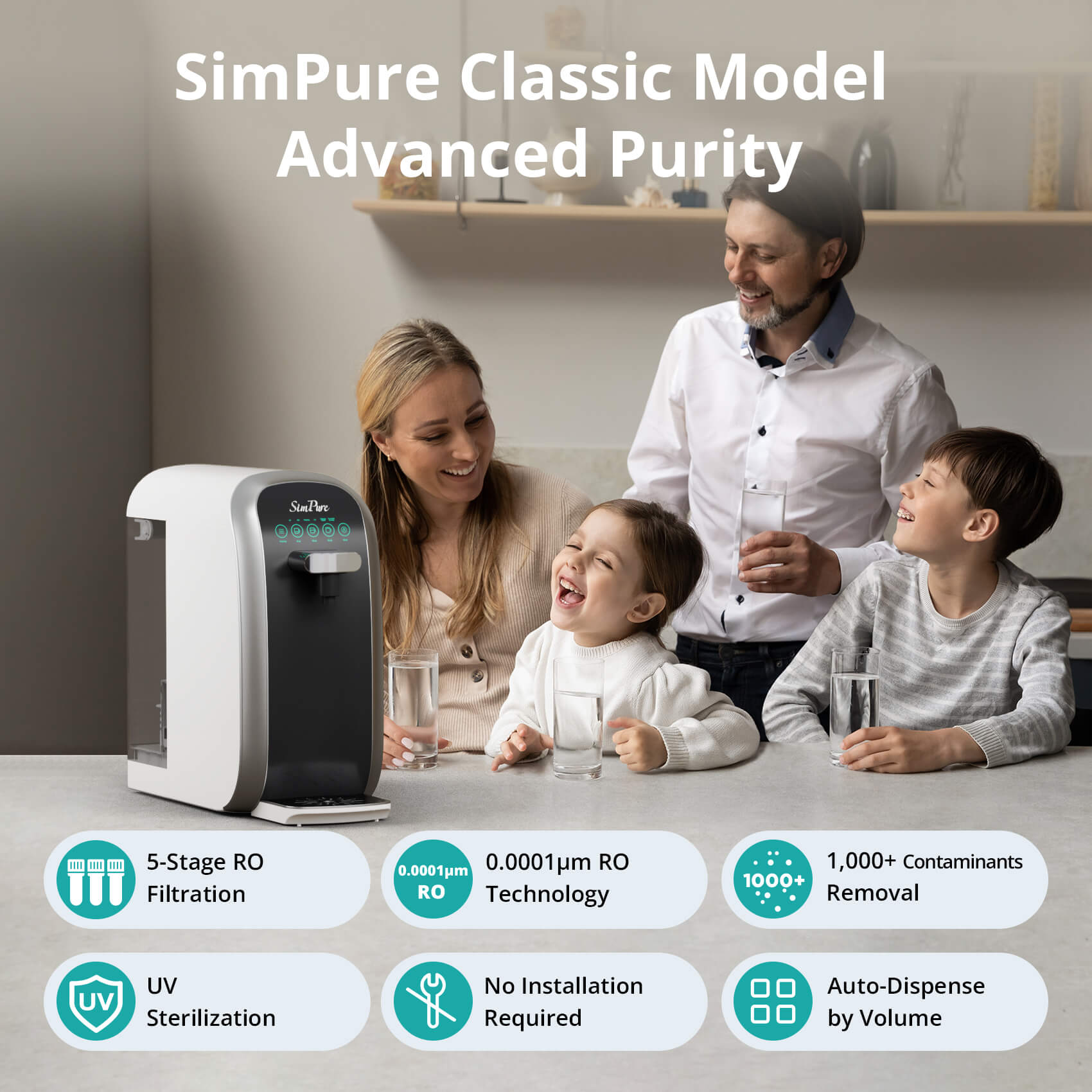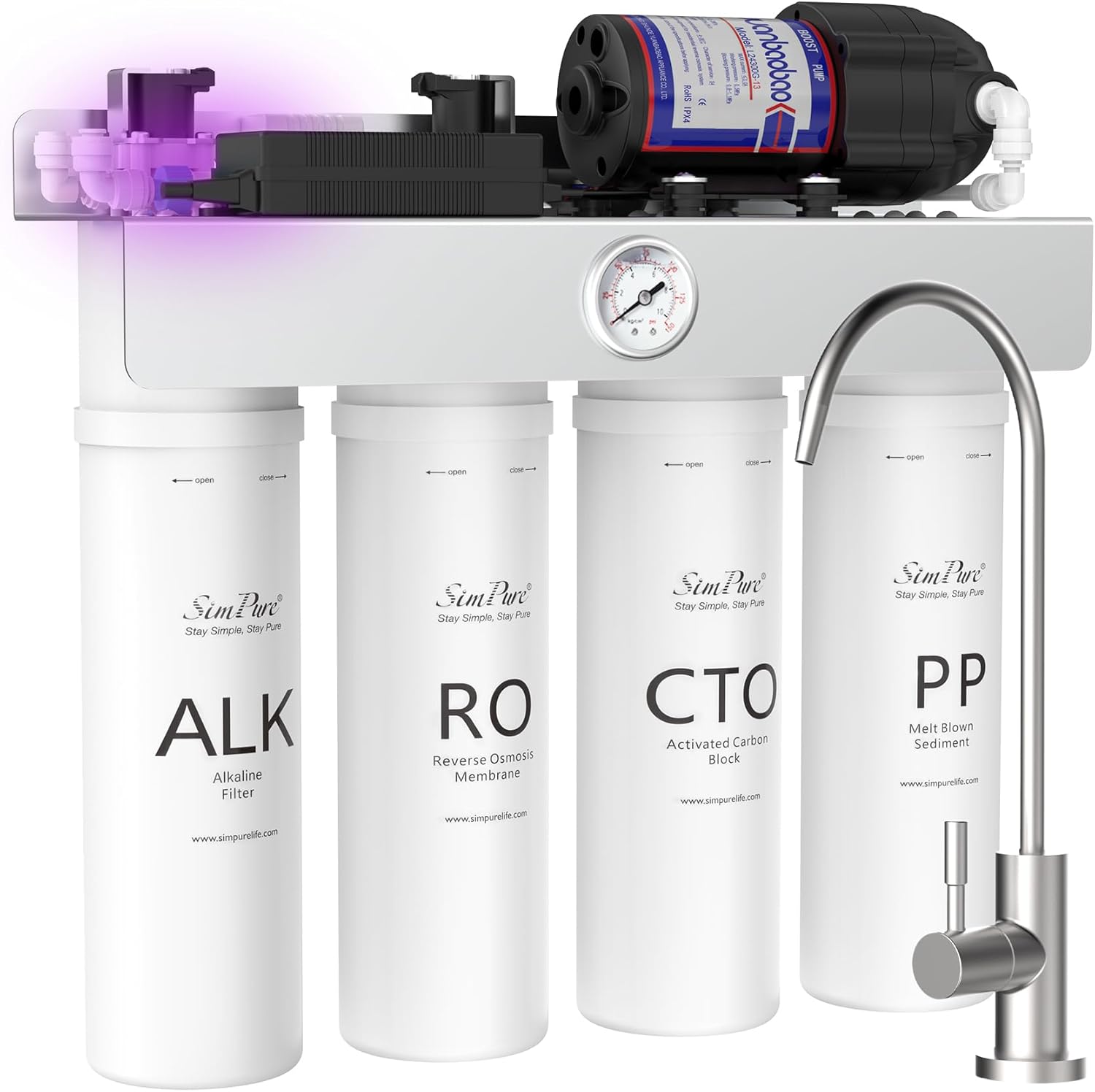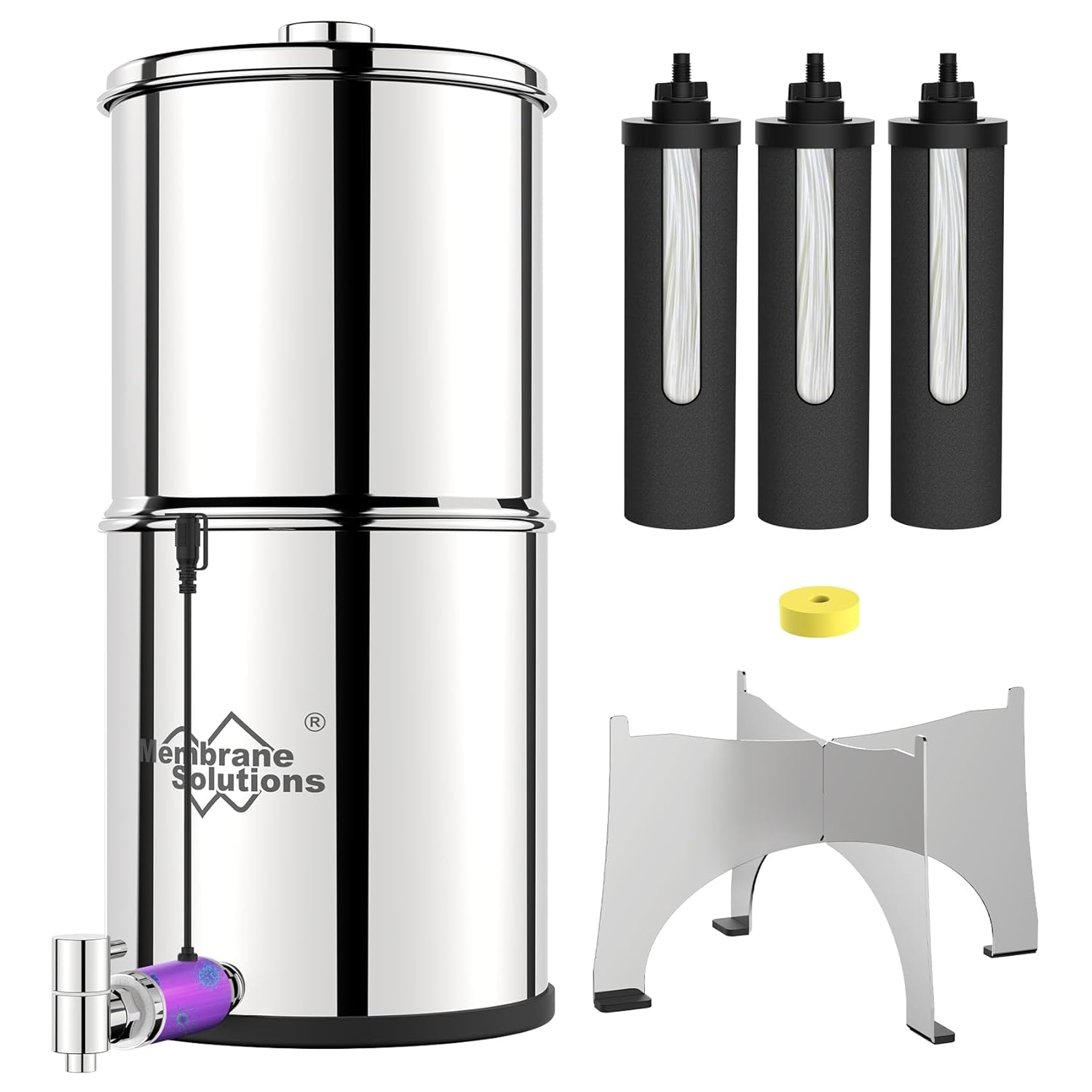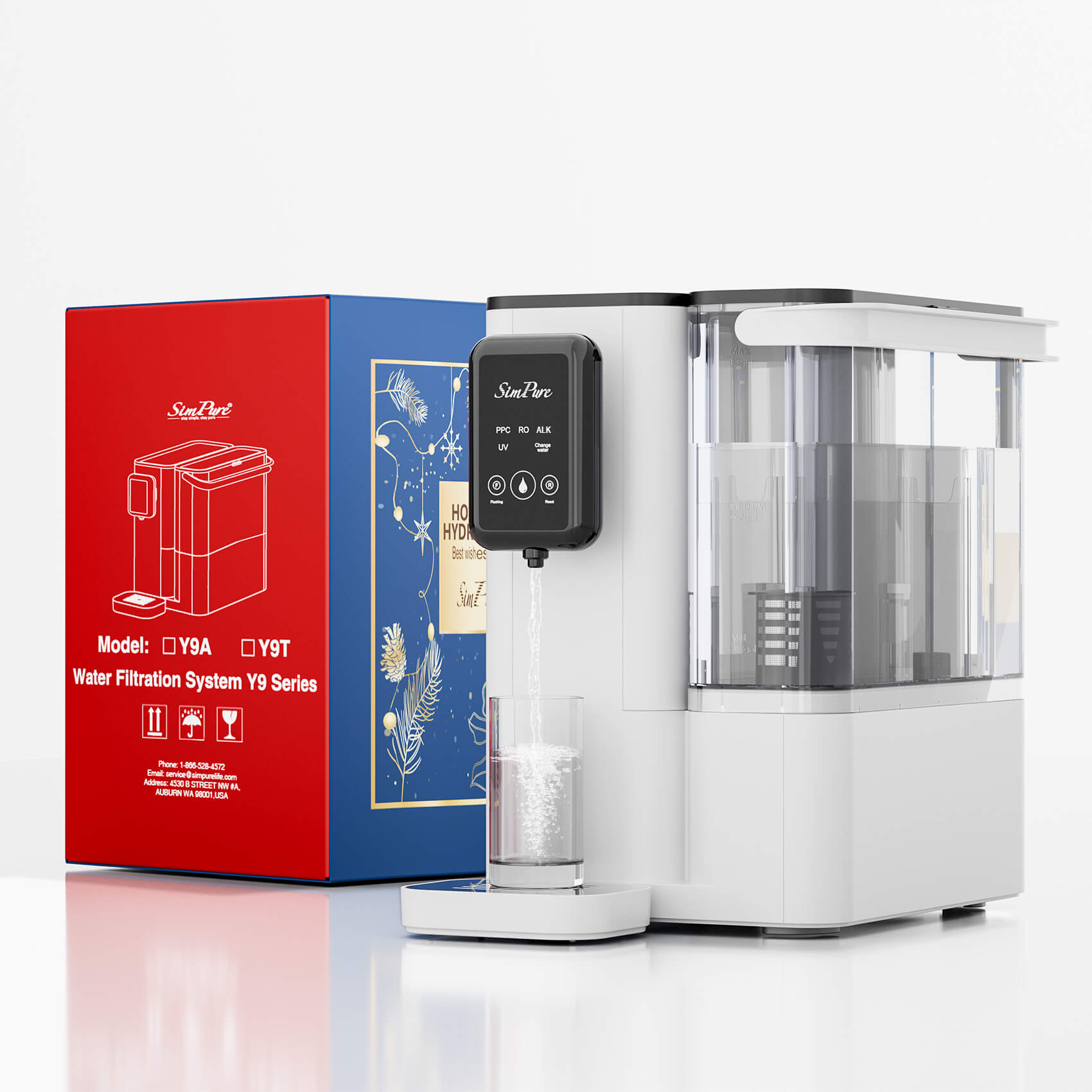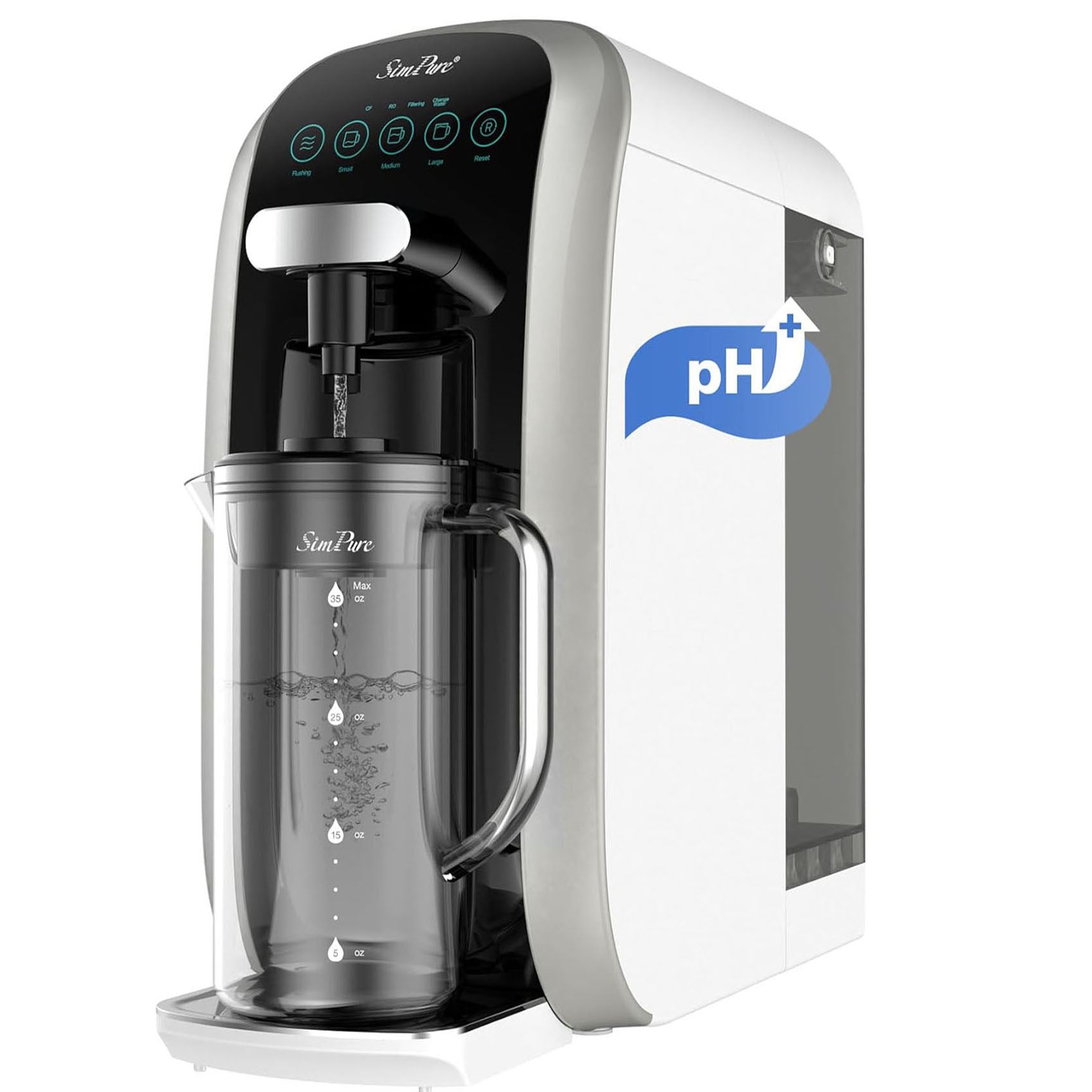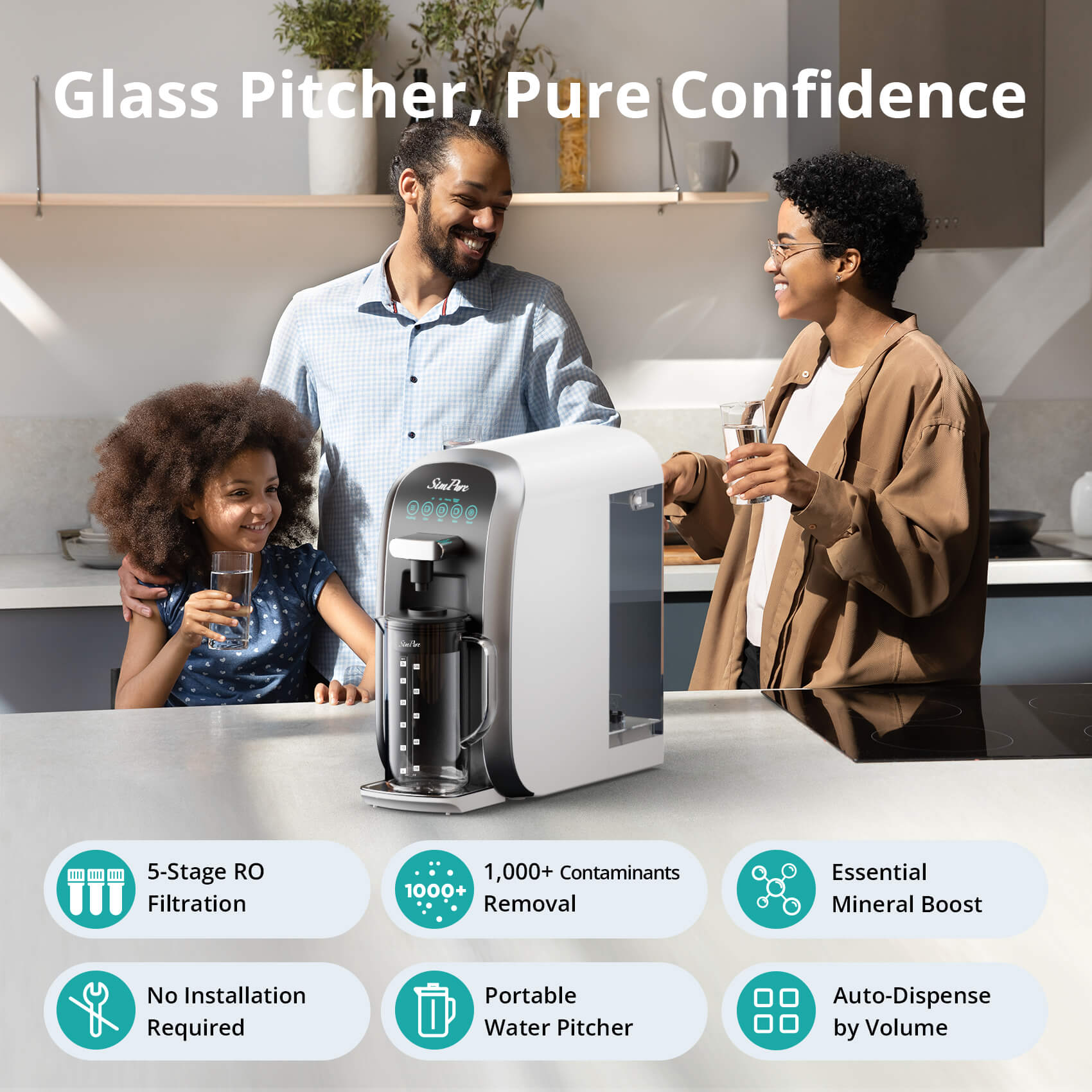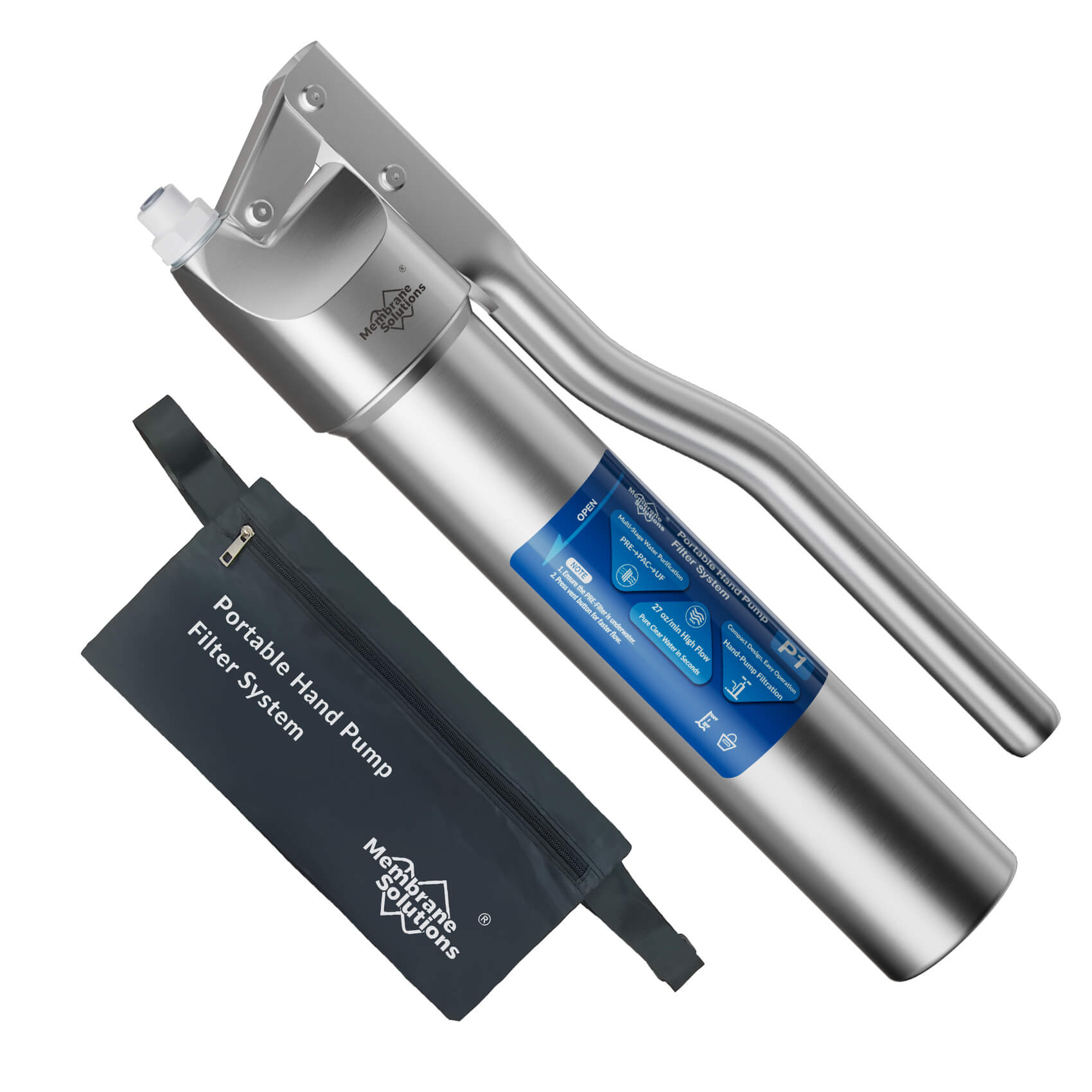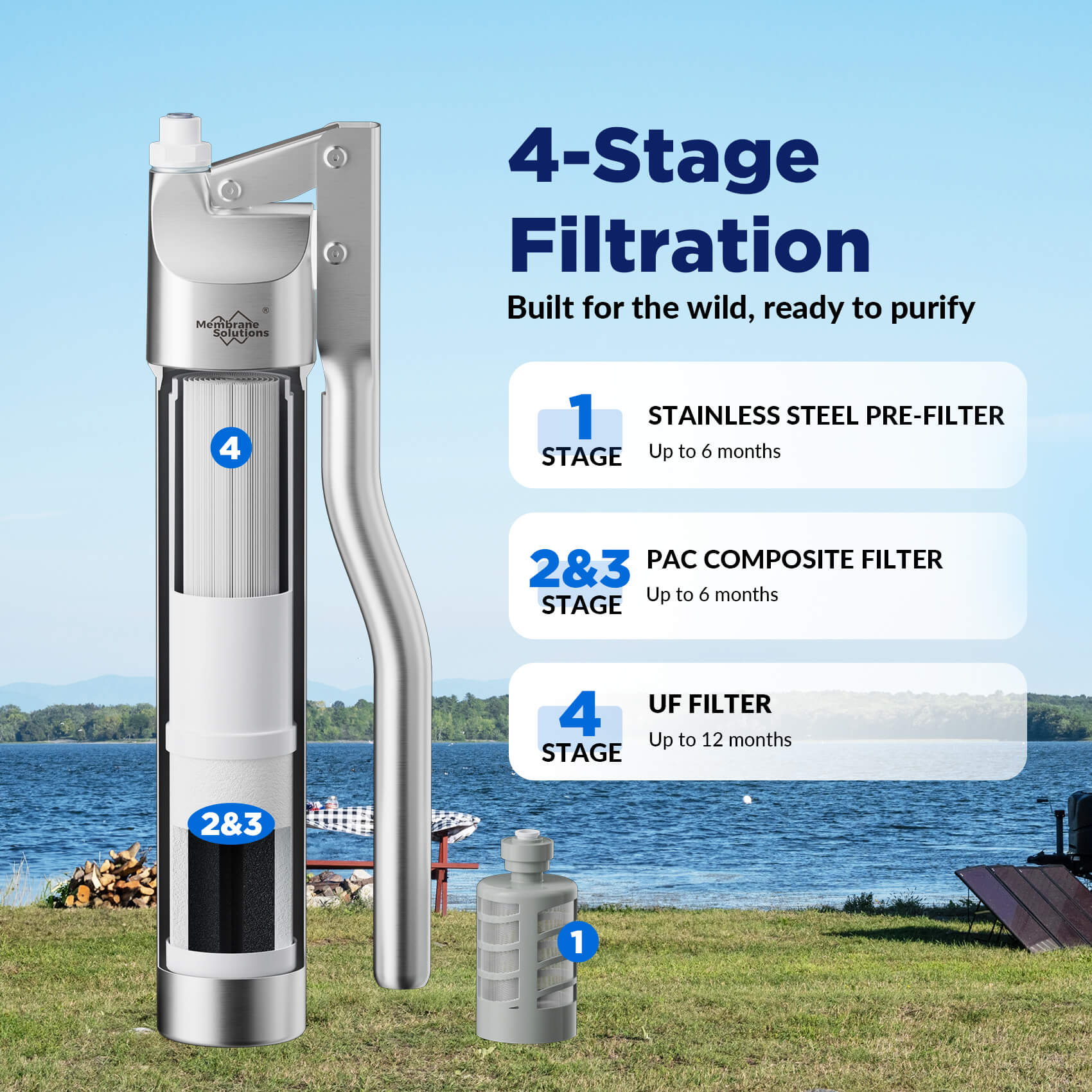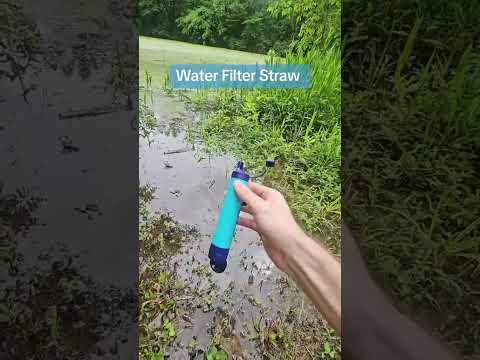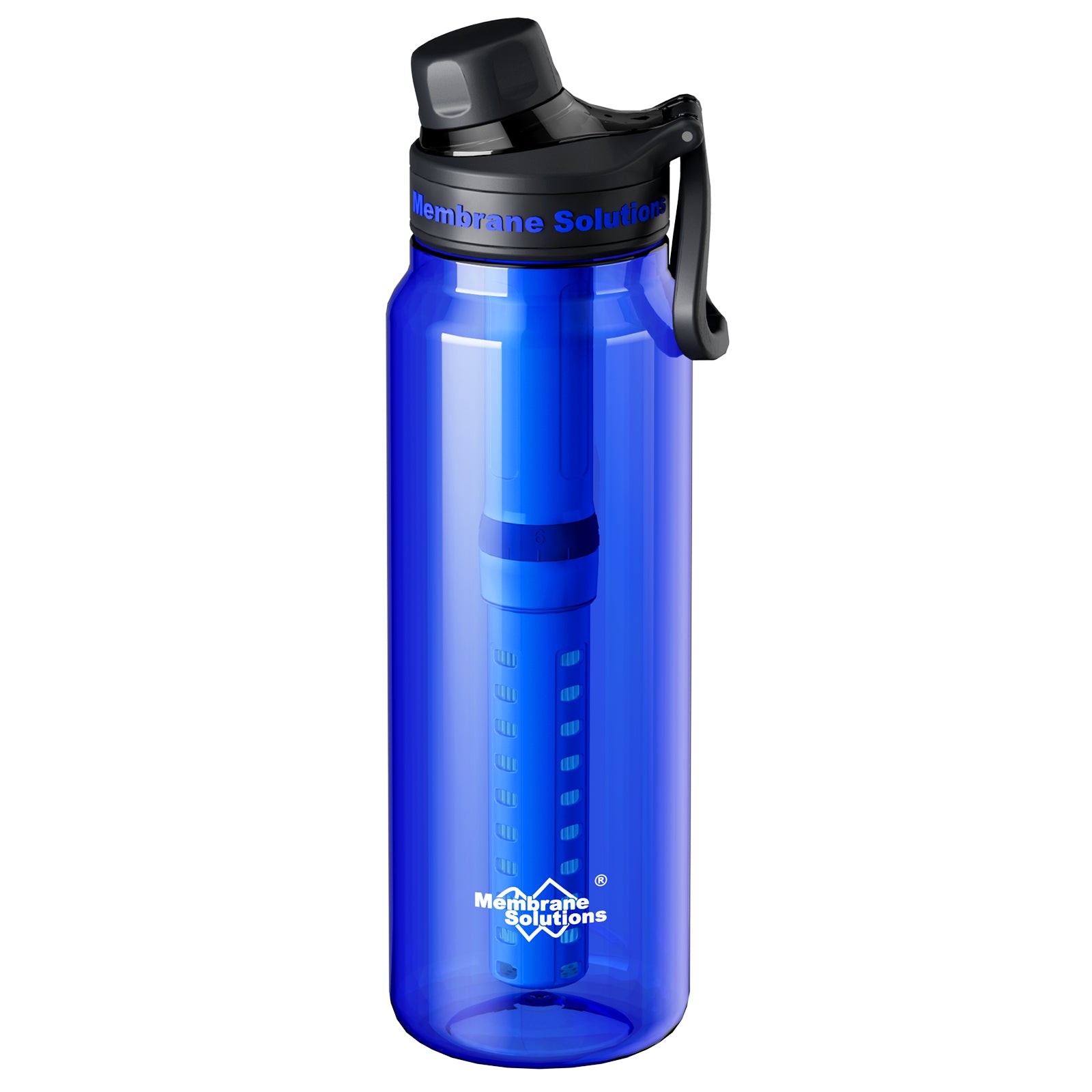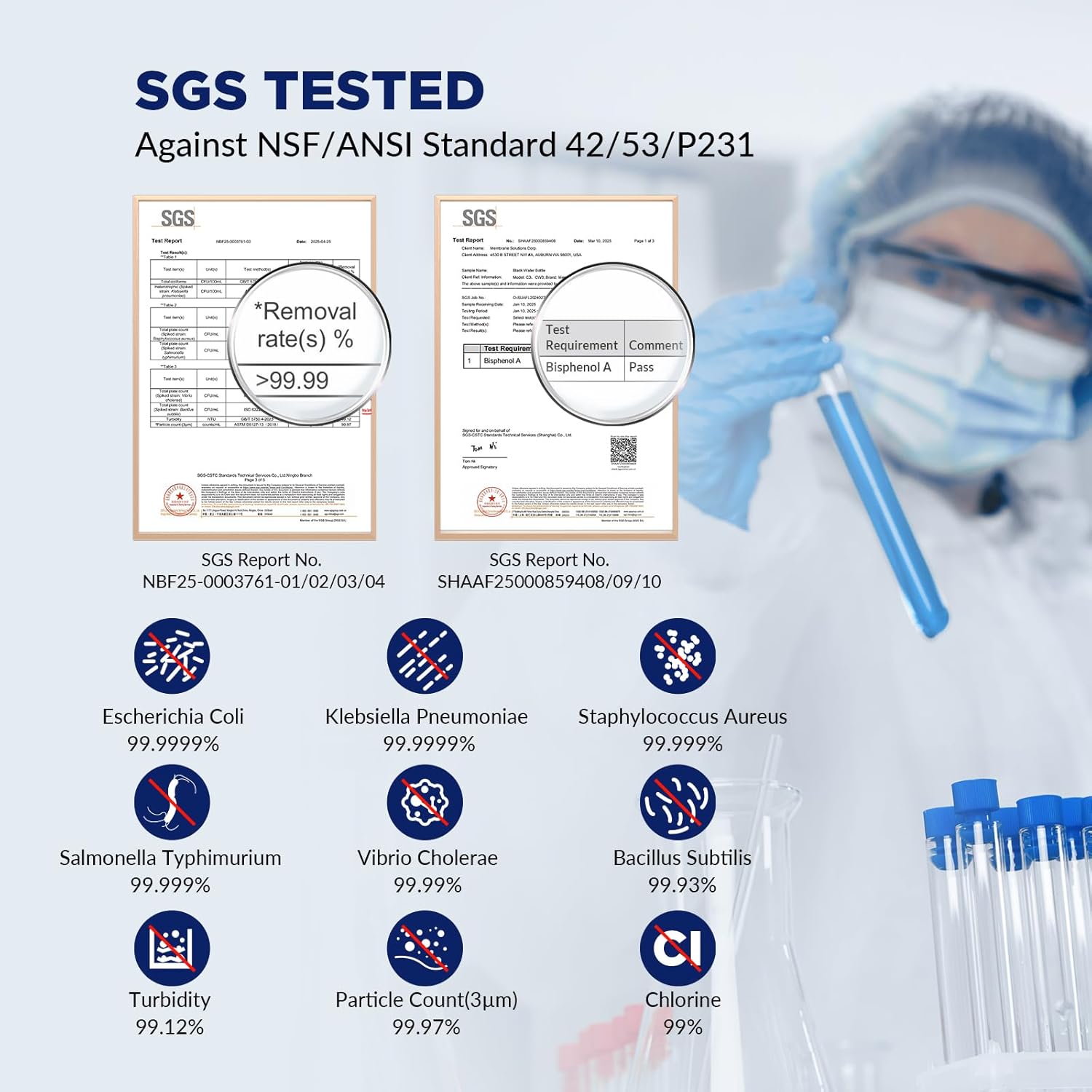When we are using reverse osmosis RO water system to filter our drinking water what we should keep in mind is that we should control the reverse osmosis pressure in a proper range, because whether the reverse osmosis pressure is too high or too low it will affect the filtration effect of the reverse osmosis. If There is low pressure in reverse osmosis it can not even start. Besides low pressure in ro system could result in no water coming out of the reverse osmosis system. So what is the perfect pressure range of the reverse osmosis system? What cause the low pressure in reverse osmosis RO system and how to fix it? Just keep reading!
The Pressure Range for Reverse Osmosis RO System

Normally, the perfect pressure of the reverse osmosis system is required to be 0.2-0.5MPa. First, in order to ensure the effect of regenerative salt absorption, the pressure needs to be greater than 0.2MPa. Because the automatic reverse osmosis water treatment equipment relies on hydraulic pressure to form negative pressure for salt extraction, the upper end pressure directly affects the speed and effect of salt extraction. Usually, under the pressure below 0.18MPa, the salt absorption effect is significantly reduced. However, when the pressure reaches 0.5MPa or higher, the salt absorption effect of the reverse osmosis system will certainly be better, but at this time, the pressure of the pipeline is too high, this could lead to easy leakage of each joint of the reverse osmosis. In addition, if the pressure is too high, the internal components of the multi-way valve will be over-pressurized, which may cause the multi-way valve to work inaccurately, thereby directly affecting the filtration effect of the ro system. Therefore, the perfect working pressure of the reverse osmosis system is 0.2-0.5MPa, which will affect the normal operation of the reverse osmosis system if it is higher or lower than this range.
Then Why Does My Reverse Osmosis System Has Low Pressure?
As homeowners, we often expect our reverse osmosis (RO) systems to deliver water within the normal pressure range. However, there are times when you might notice a significant drop in pressure, leaving you wondering, "why does my reverse osmosis system have low pressure?" Let's explore five specific reasons that could be causing this issue.
①. Unstable Voltage Cause Low Water Pressure in Reverse Osmosis
Voltage instability will cause insufficient power supply to the reverse osmosis system, making the entire equipment unable to work properly. As a result, the water pressure in reverse osmosis will be low.
To fix this issue, consider installing a voltage stabilizer or surge protector for your RO system. These devices will help maintain a steady power supply, ensuring the pump functions consistently and maintains optimal water pressure, delivering cleaner and more efficiently filtered water.
②. Problems With the Reverse Osmosis Itself Will Cause the Low Water Pressure In RO System
If the reverse osmosis system leaks, the water flow rate will be low as a result, and if the internal problems are not fixed in time, the water pressure and water flow on reverse osmosis system will be insufficient.
To diagnose and resolve this, start by checking for clogged or damaged filters, which can restrict water flow. Inspect the RO membrane for damage or scaling, as these can hinder filtration and pressure. Ensure proper tubing connections and look for any leaks. If the issue persists, consult the manufacturer's manual or seek professional assistance to pinpoint and fix the specific RO system problem causing low water pressure.
③. Faulty Booster Pump Result in Low Pressure in RO System
Special inspection and maintenance personnel can be asked to check whether the booster pump of the reverse osmosis system is faulty. If the inlet water pressure of the booster pump is insufficient or the pump part leaks water or air, it will directly cause the low pressure in RO system.
To fix this issue, first, ensure the power supply to the pump is intact. If the pump motor is running but still not producing enough pressure, it may need replacement. Consult your system's manual or contact a professional technician to source and install a compatible replacement booster pump for optimal RO water pressure.
④. The Pressure of the Precision Filter Is Not Enough
When the pressure of the precision filter is insufficient, the reverse osmosis pressure will also be unstable. At this time, we have to check the original pump to see if the original pump pressure is not enough. If the original pump pressure is insufficient, a booster pump is required to ensure the water pressure.
To fix this issue, you can:
- Check for clogs or blockages in the precision filter.
- Replace the filter if it's old or damaged.
- Ensure the water supply to the filter is at an adequate pressure.
- Regularly maintain and clean the filter to prevent future pressure problems.
⑤. The Filter Element Blocked by Dirt
If the fine filter is clogged with dirt, insufficient water flow can result in reverse osmosis low pressure.
To fix this, first, turn off the system's water supply. Then, remove and clean the sediment and pre-filters, or replace them if they're too dirty. Regular maintenance, including routine filter replacements, helps prevent this issue. Ensure you follow the manufacturer's guidelines for filter replacement schedules to maintain optimal RO system performance and water pressure.

In addition, the working pressure of the reverse osmosis is directly related to the salt content and temperature of the influent water. If the conventional water source is tap water, river water, groundwater, and reservoir water, the working pressure of the reverse osmosis is generally 8-12bar, and if it is a seawater source, the working pressure is generally about 45bar. And sometimes if the temperature is to low the pressure in reverse osmosis system will be low as well.
In conclusion, maintaining the right pressure in your reverse osmosis (RO) system is crucial for effective filtration. The ideal pressure range is 0.2-0.5MPa (vary depending on the specific make and model of the system), ensuring optimal performance without compromising the system's integrity. However, if you ever wonder why is my ro water pressure low, consider voltage stability, system issues, booster pump condition, precision filter pressure, and filter cleanliness as potential culprits. Regular maintenance and professional assistance when needed will keep your RO system operating smoothly.



